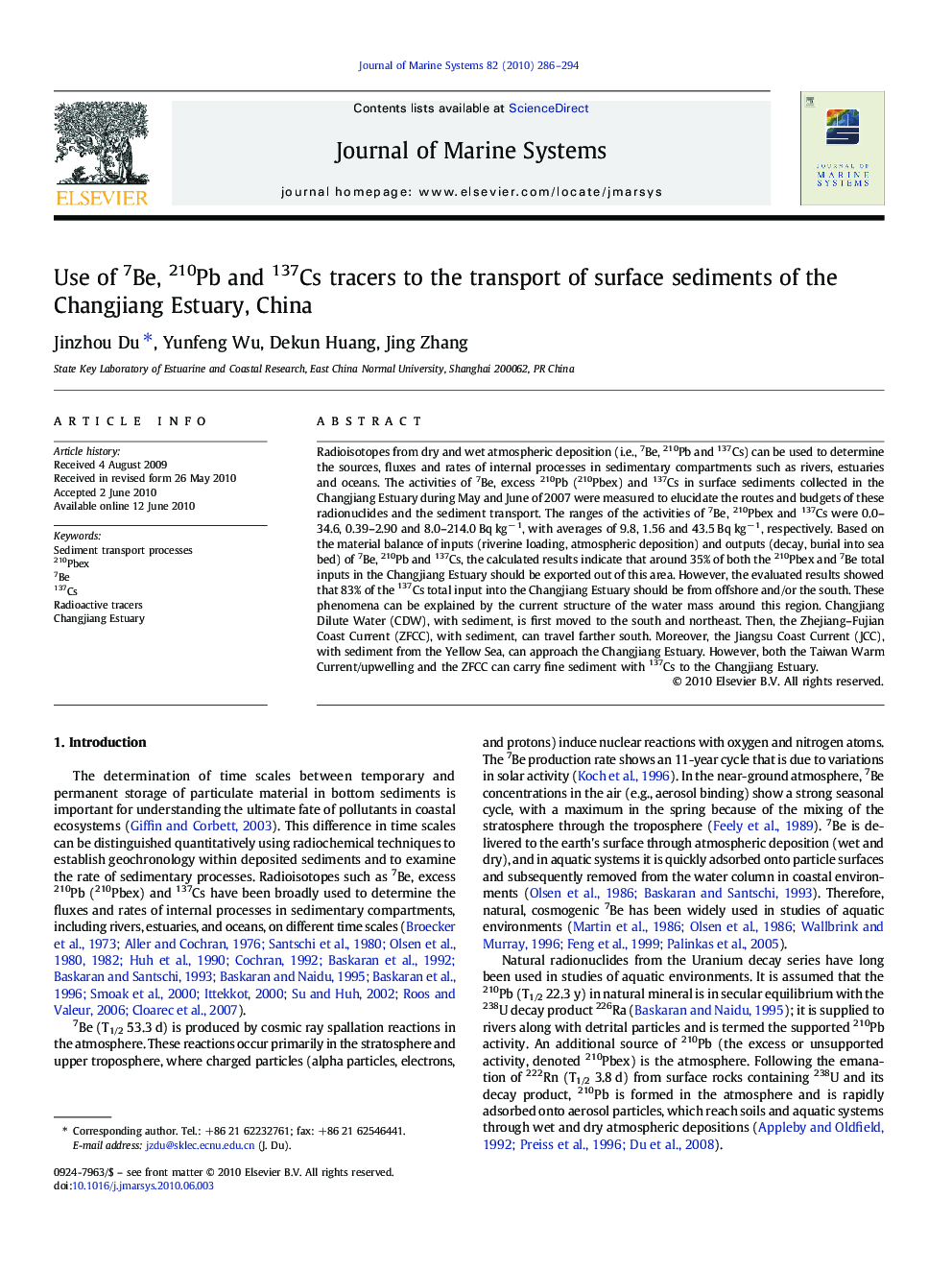| Article ID | Journal | Published Year | Pages | File Type |
|---|---|---|---|---|
| 4548603 | Journal of Marine Systems | 2010 | 9 Pages |
Radioisotopes from dry and wet atmospheric deposition (i.e., 7Be, 210Pb and 137Cs) can be used to determine the sources, fluxes and rates of internal processes in sedimentary compartments such as rivers, estuaries and oceans. The activities of 7Be, excess 210Pb (210Pbex) and 137Cs in surface sediments collected in the Changjiang Estuary during May and June of 2007 were measured to elucidate the routes and budgets of these radionuclides and the sediment transport. The ranges of the activities of 7Be, 210Pbex and 137Cs were 0.0–34.6, 0.39–2.90 and 8.0–214.0 Bq kg− 1, with averages of 9.8, 1.56 and 43.5 Bq kg− 1, respectively. Based on the material balance of inputs (riverine loading, atmospheric deposition) and outputs (decay, burial into sea bed) of 7Be, 210Pb and 137Cs, the calculated results indicate that around 35% of both the 210Pbex and 7Be total inputs in the Changjiang Estuary should be exported out of this area. However, the evaluated results showed that 83% of the 137Cs total input into the Changjiang Estuary should be from offshore and/or the south. These phenomena can be explained by the current structure of the water mass around this region. Changjiang Dilute Water (CDW), with sediment, is first moved to the south and northeast. Then, the Zhejiang–Fujian Coast Current (ZFCC), with sediment, can travel farther south. Moreover, the Jiangsu Coast Current (JCC), with sediment from the Yellow Sea, can approach the Changjiang Estuary. However, both the Taiwan Warm Current/upwelling and the ZFCC can carry fine sediment with 137Cs to the Changjiang Estuary.
